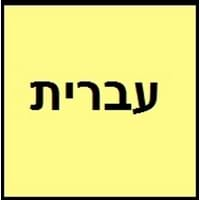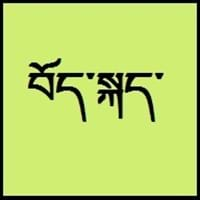Countries
Israel
China, Nepal
National Language
Israel
Nepal, Tibet
Second Language
Israel
Not spoken in any of the countries
Speaking Continents
Africa, Asia, Europe
Asia
Minority Language
Poland
China, India, Nepal
Regulated By
Academy of the Hebrew Language
Committee for the Standardisation of the Tibetan Language
Interesting Facts
- The original language of Bible is Hebrew.
- The men and women use different verbs in hebrew language.
- Tibetan dialects vary alot, so it's difficult for tibetans to understand each other if they are not from same area.
- Tibetan is tonal with six tones in all: short low, long low, high falling, low falling, short high, long high.
Similar To
Arabic and Aramaic languages
Not Available
Derived From
Aramaic Language
Not Available
Alphabets in
Hebrew-Alphabets.jpg#200
Tibetan-Alphabets.jpg#200
Scripts
Hebrew
Tibetan alphabet, Tibetan Braille
Writing Direction
Right-To-Left, Horizontal
Left-To-Right, Horizontal
Hello
שלום (Shalom)
བཀྲ་ཤིས་བདེ་ལེགས། (tashi delek)
Thank You
תודה (Toda)
ཐུགས་རྗེ་ཆེ་། (tujay-chay)
How Are You?
מה שלומך? (ma shlomxa)
ཁྱེད་རང་སྐུ་གཇུགས་བདེ་པོ་ཡིན་པས།
(kayrang kusu debo yimbay?)
Good Night
לילה טוב (Laila tov)
གཟིམ་ལཇག་གནང་དགོས་། (sim-jah nahng-go)
Good Evening
ערב טוב (Erev tov)
དགོང་དྲོ་བདེ་ལེགས།
Good Afternoon
אחר צהריים טובים (Achar tzahara'im tovim)
ཉིན་གུང་བདེ་ལེགས།
Good Morning
בוקר טוב (Boker tov)
སྔ་དྲོ་བདེ་ལེགས། (nga-to delek)
Please
בבקשה (bevekshah)
thu-je zig / ku-chee.
Sorry
סליחה! (Slicha)
ཀོང་དགས་། (gawn-da)
Bye
להתראות (Lehitraot)
ག་ལེར་ཕེབས་། (kha-leh phe)
I Love You
אני אוהבת אותך (Ani ohevet otcha)
ང་ཁྱེད་རང་ལ་དགའ་པོ་ཡོད་ (nga kayrâng-la gawpo yö)
Excuse Me
בבקשה!
དགོངས་དག བཟོད་དུ་གསོལ། ཐུགས་རྗེ་གཟིགས།
Dialect 1
Ashkenazi Hebrew
Central Tibetan
Where They Speak
Israel
China, India, Nepal
How Many People Speak
Not Available
Dialect 2
Samaritan Hebrew
Khams Tibetan
Where They Speak
Israel, Palestine
Bhutan, China
How Many People Speak
Not Available
Dialect 3
Yemenite Hebrew
Amdo Tibetan
Where They Speak
Israel
China
How Many People Speak
Not Available
Speaking Population
Not Available
Not Available
Second Language Speakers
Not Available
Native Name
עברית / עִבְרִית (ivrit)
བོད་སྐད་ (pö-gay)
Alternative Names
Israeli, Ivrit
Bhotia, Dbus, Dbusgtsang, Phoke, Tibetan, U, Wei, Weizang, Zang
French Name
hébreu
tibétain
German Name
Hebräisch
Tibetisch
Pronunciation
[(ʔ)ivˈʁit] - [(ʔ)ivˈɾit]
Not Available
Ethnicity
Not Available
tibetan people
Language Family
Afro-Asiatic Family
Sino-Tibetan Family
Subgroup
Semitic
Tibeto-Burman
Branch
Canaanitic
Not Available
Early Forms
Biblical Hebrew, Mishnaic Hebrew, Medieval Hebrew, Hebrew
Old Tibetan, Classical Tibetan
Standard Forms
Modern Hebrew
Standard Tibetan
Language Position
Not Available
Signed Forms
Signed Hebrew
Tibetan Sign Language
Scope
Individual
Not Available
ISO 639 6
Not Available
Not Available
Glottocode
hebr1246
tibe1272
Linguasphere
12-AAB-a
No data Available
Language Type
Living
Not Available
Language Linguistic Typology
Subject-Verb-Object, Verb-Subject-Object
Not Available
Language Morphological Typology
Fusional, Synthetic
Not Available
All Hebrew and Tibetan Dialects
Most languages have dialects where each dialect differ from other dialect with respect to grammar and vocabulary. Here you will get to know all Hebrew and Tibetan dialects. Various dialects of Hebrew and Tibetan language differ in their pronunciations and words. Dialects of Hebrew are spoken in different Hebrew Speaking Countries whereas Tibetan Dialects are spoken in different Tibetan speaking countries. Also the number of people speaking Hebrew vs Tibetan Dialects varies from few thousands to many millions. Some of the Hebrew dialects include: Ashkenazi Hebrew, Samaritan Hebrew. Tibetan dialects include: Central Tibetan , Khams Tibetan. Also learn about dialects in South American Languages and North American Languages.
Hebrew and Tibetan Speaking population
Hebrew and Tibetan speaking population is one of the factors based on which Hebrew and Tibetan languages can be compared. The total count of Hebrew and Tibetan Speaking population in percentage is also given. The percentage of people speaking Hebrew language is Not Available whereas the percentage of people speaking Tibetan language is Not Available. When we compare the speaking population of any two languages we get to know which of two languages is more popular. Find more details about how many people speak Hebrew and Tibetan on Hebrew vs Tibetan where you will get native speakers, speaking population in percentage and native names.
Hebrew and Tibetan Language Codes
Hebrew and Tibetan language codes are used in those applications where using language names are tedious. Hebrew and Tibetan Language Codes include all the international language codes, glottocodes and linguasphere.





